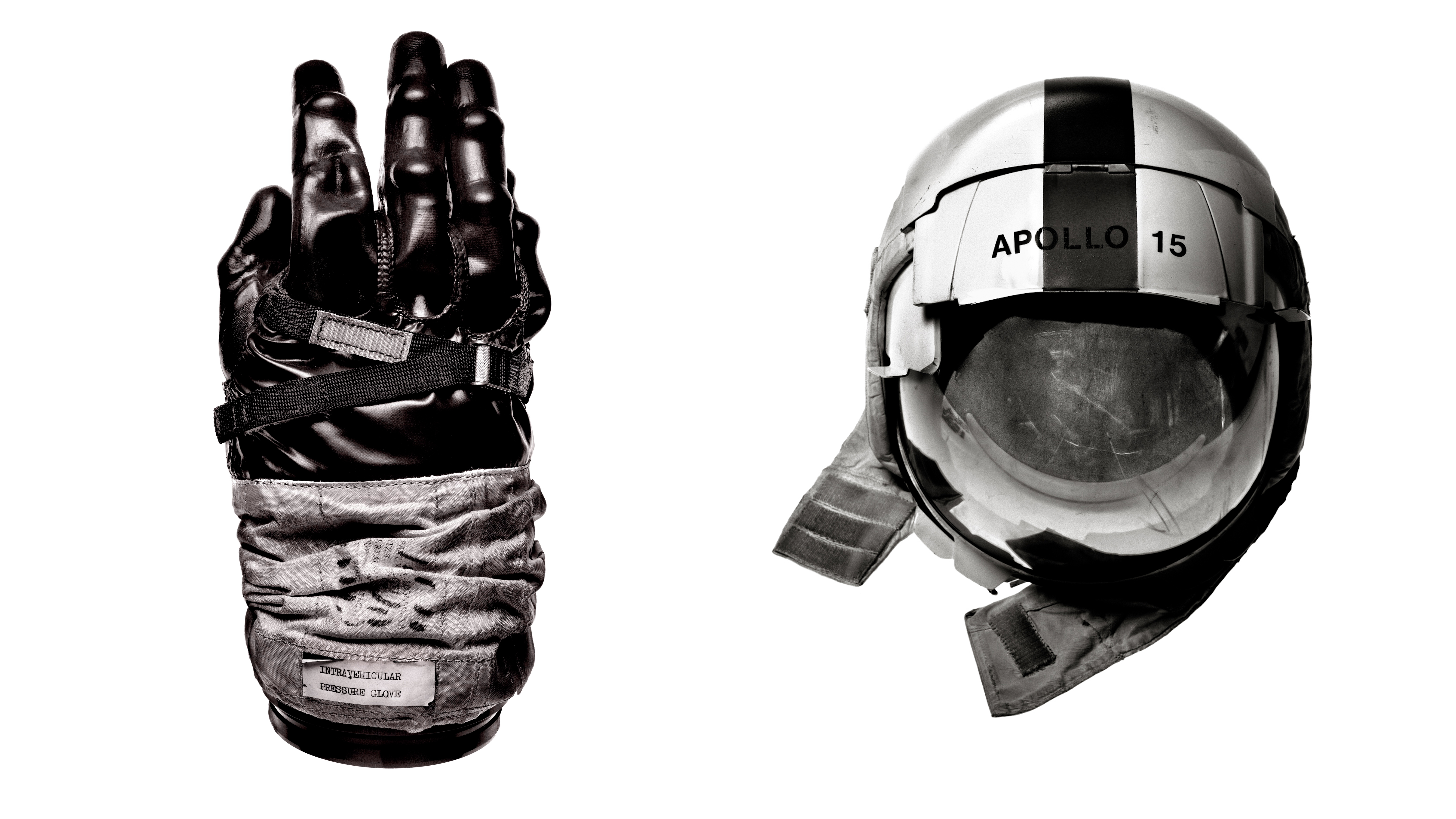Sharp 8K Video Camera: 33MP Micro Four Thirds sensor, 10-bit 8K at 30fps
New camera boasts smartphone-like interface, first ever 33MP MFT sensor, shoots 8K footage to standard SD cards
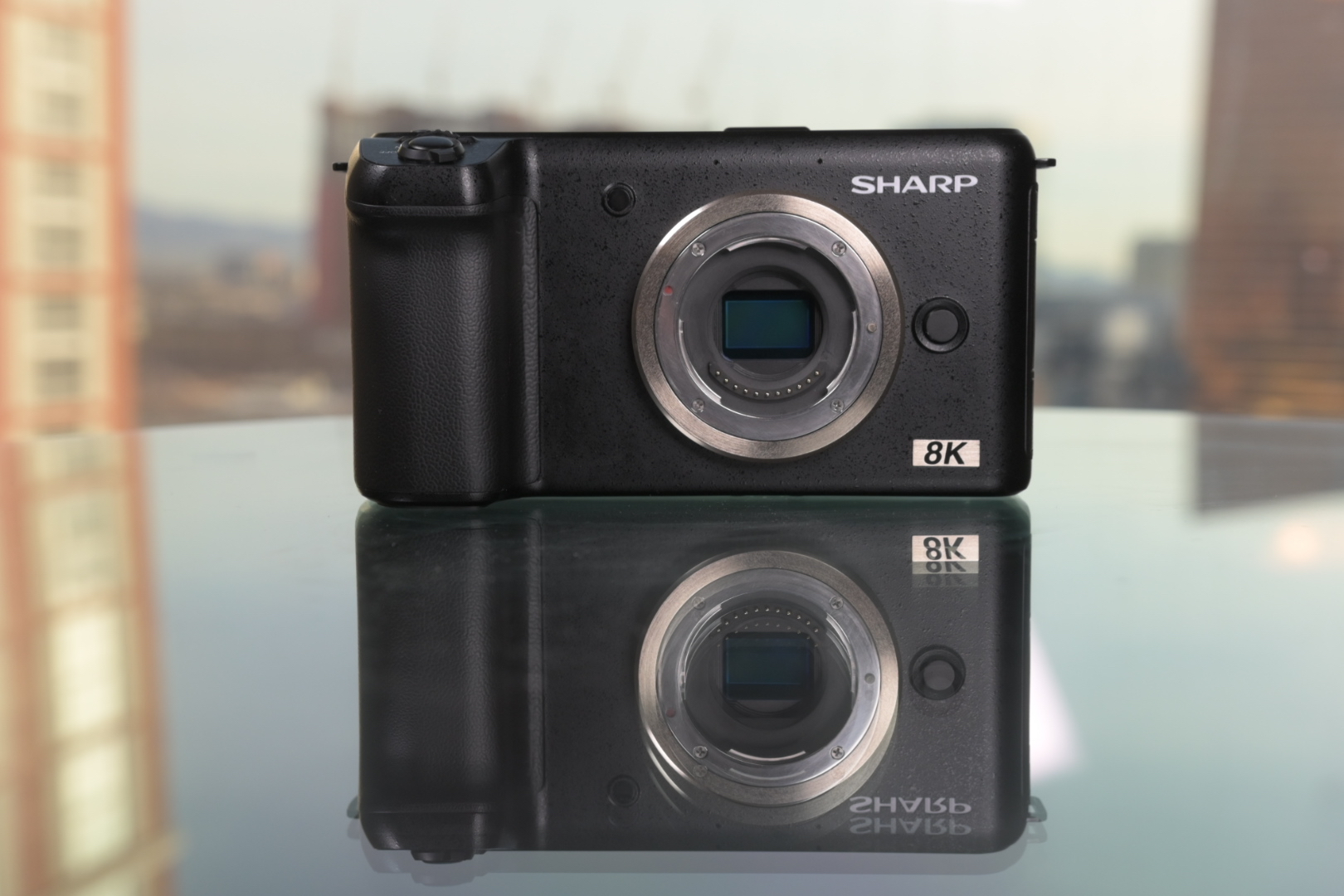
The highly anticipated Sharp 8K Video Camera was shown off in working (albeit extremely limited, prototype) form at the NAB Show in Las Vegas, and early hands-on reports of the camera are very exciting. Even the best 4K cameras can't approach the resolution this camera is capable of achieving.
While many stills photographers are still asking what is 8K, in the world of videography it is already the next big frontier for cameras. With its pioneering work in the field of 8K with products like televisions, Sharp is well positioned to bring that technology to the imaging market.
Sharp has been extremely brave in allowing public tests of the prototype camera just three months after it was announced, and this early stage of development should be born in mind when considering the device's current limitations. Even at this stage, though, it offers some tantalizing potential.
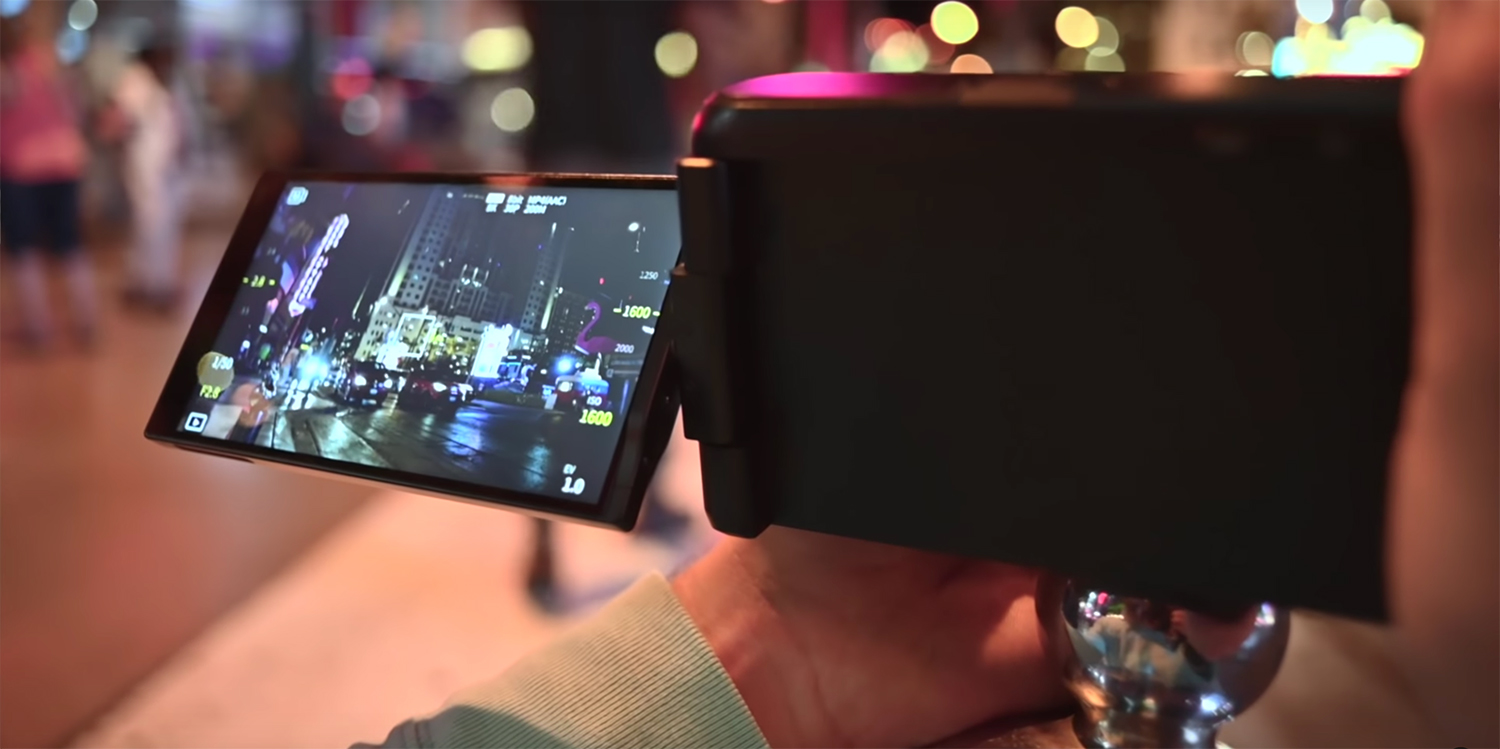
Sharp 8K Video Camera: new Micro Four Thirds sensor
At the heart of the camera is a 33 megapixel Micro Four Thirds (MFT) sensor – which is a huge breakthrough for MFT technology, as the sensor size for the format had previously hit a ceiling of 20.4MP in stills cameras such as the Olympus OM-D E-M1X.
While the new sensor is reportedly made by Sharp, it appears that it is actually made by Socle – a Taiwanese company that, like Sharp, is owned by Foxconn Technology Group. It will also be a true 8K sensor, not a Quad Bayer version of an existing sensor (Quad Bayer puts pixels into groups, then arranges them according to specific needs, such as producing higher resolution).
Interestingly, the sensor appears to be in 16:9 format – a departure from the traditional 4:3 ratio that Micro Four Thirds sensors possess, but one that makes obvious sense for a video-oriented camera.
Contrary to earlier reports, the sensor in the Sharp 8K Video Camera will not benefit from in-body image stabilization. We would speculate that this could be due to heat dissipation, given the amount of horsepower that will be required to record 8K footage – not to mention power the 5-inch screen.
Get the Digital Camera World Newsletter
The best camera deals, reviews, product advice, and unmissable photography news, direct to your inbox!
Sharp 8K Video Camera: video specs
In terms of that recording, the camera is currently able to record 8K at 30, 25 and 24 frames per second. Sharp will also introduce 4K and 1080p at 60fps – as it stands, the camera will not be delivering 120fps due to sensor limitations.
It uses the slightly long in the tooth H.265 format, with an MP4 wrapper at 200 megabits per second, at 420 in 8-bit. Ultimately, Sharp is aiming for 422 10-bit external recording.
The prototype is at such an early stage that many aspects of the camera's architecture are not yet present – even basics such as a menu system and a battery life indicator are absent, and the autofocus system is also pretty non-existent.
"There is kind of a weird implementation of [autofocus], but it really sucks, so Sharp advised me to shoot in manual focus mode," said Dave Maze of Kinotika. "They did tell me, however, that they will do a tracking continuous autofocus system with this camera in the future."
Indeed, such is its early stage of development, the camera's manual focus assists like focus peaking and magnification haven't yet been implemented. Ultimately, though, autofocus systems should be supported – though continuous AF isn't 100%.
"Eventually it will support all native Micro Four Thirds lenses in terms of being able to do autofocus," said Matt Allard of Newsshooter. "I'm not sure at this stage whether that will include continuous autofocus; at the moment you can do touch autofocus on the back screen. This is working so-so at the moment with native Micro Four Thirds lenses."
Sharp 8K Video Camera: screen and I/O
The five-inch, fully articulated rear touchscreen offers fingertip functionality much like a smartphone, in terms of swiping/scrolling through dials to adjust exposure settings. From all reports, it is as intuitive and easy to use as a modern phone, which is a big plus point.
The Sharp 8K Video Camera boasts impressive battery life, even at this early stage, capable of continuous shooting of between 45 minutes and an hour using the trusty Canon LP-E6 batteries (as used in the Canon EOS 5D series and Canon EOS R).
In terms of I/O ports it boasts a mini XLR jack, USB-C port (which Sharp aims to support charging during operation), a Mini HDMI port (which will be replaced with a full HDMI for production), a 3.5mm microphone input (along with an in-built stereo mic for scratch audio) and standard headphone jack.
Sharp is also working on the ability to add additional codecs, and to record directly to an external hard drive via the USB-C port.
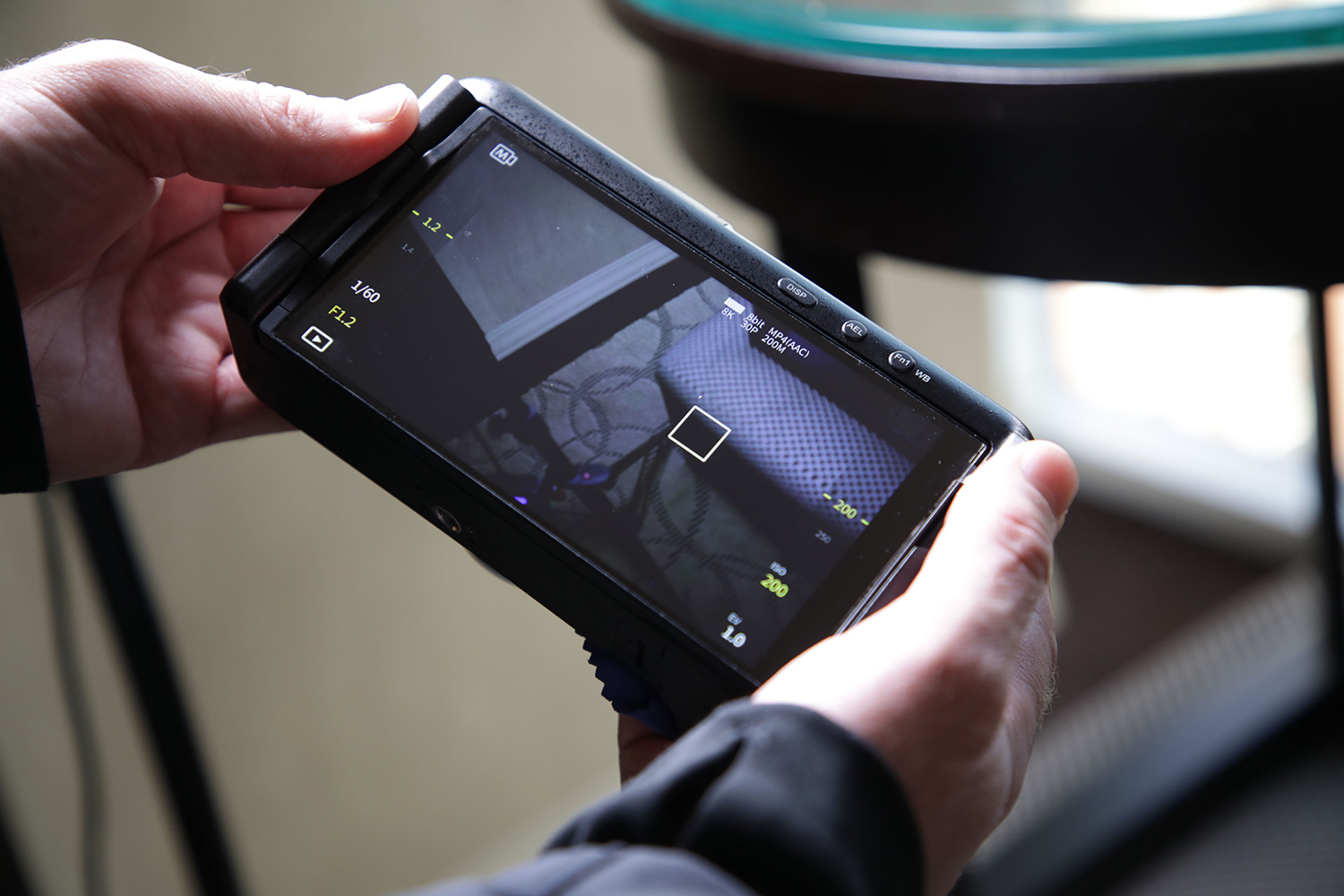
Sharp 8K Video Camera: video quality
Despite the relatively low bitrate files, and the fact that there is currently no log mode (and only a single picture profile), early footage captured by the Sharp 8K Video Camera is quite impressive.
Maze remarked that he was impressed with both the color science and the ISO performance, noting that the Sharp camera's ISO is as good as that of the Panasonic Lumix GH5S or Sony A6300, and that he would be confident shooting at ISO3200 for most cases in low light.
One potentially prohibitive issue, at least with the 8K footage, is the degree of rolling shutter that the video files are subject to. While the Sony A6400 shooting in 4K is worse in this respect, there is still a noticeable amount of the "wobbly jelly" effect when you whip side-to-side with the camera, producing vertical lines (such as lampposts) that appear to be bending.
The real issue, however (and unsurprisingly), is the radical workflow rethink that is required when recording and rendering 8K footage.
"I love this camera, I love the size, I love the color, I love this giant flip screen thing, but honestly 8K is kind of ridiculous," said Maze. "The problem that I'm having with it is, in order for us to edit this thing, we literally have to transcode everything to proxy, and it takes forever."
Allard concurred. “We couldn’t natively read [the files] in Final Cut, the latest version, [we] tried it on Premiere, but not the latest version of Premiere, and it wouldn’t work, so whether it works with the latest version of Premiere I’m not actually sure. So we actually had to bring it into a program called Kyno and transcode it.”
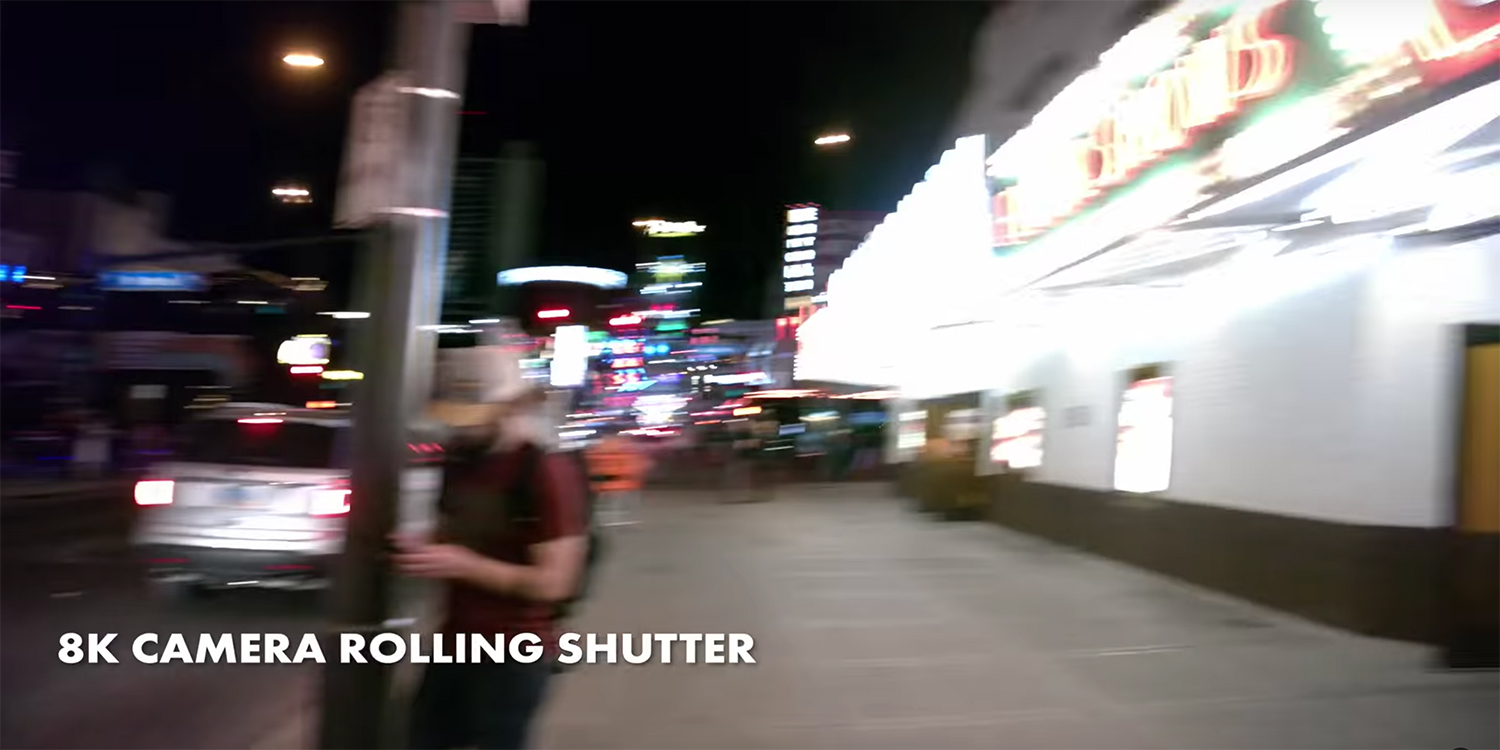
Sharp 8K Video Camera: who is it for?
In some ways, the Sharp 8K Video Camera is almost a concept camera in terms of fulfilling a need that doesn't truly yet exist. After all, most people on YouTube aren't even uploading in 4K yet. So does anyone truly need an 8K device?
"I see this camera as more of a tool for people who want 4K deliveries with extra cropping room; I don't think there's really a need for delivering in 8K yet," concludes Maze.
"But having the ability to shoot at a rather wide or medium focal length, and cropping-in in post-production and staying native to 4K, makes this a valuable tool for somebody who needs that kind of one practical use case."
Indeed, in much the same way that many people currently shoot in 4K to then add things like close-ups by cropping-in, 8K will afford video shooters the flexibility to make more of their wide- or medium-angle footage.
Having the huge rear screen removes the need for a dedicated external monitor, and building the system around Micro Four Thirds technology with its inherently smaller lenses, makes this potentially the smallest and most capable video rig on the market – and with a purported, yet still unofficial, sub-$5,000 price tag.
So long as videographers have a beefy computer and enough storage to handle the gigantic files they'll be generating, this could be a seriously exciting proposition for the future of video. We await Sony's next move with great interest…
Read more:
What is 8K? And what does it mean to photographers and videomakers?
Sharp officially joins Micro Four Thirds with Olympus and Panasonic
The best Micro Four Thirds lenses for your Olympus or Panasonic camera

James has 22 years experience as a journalist, serving as editor of Digital Camera World for 6 of them. He started working in the photography industry in 2014, product testing and shooting ad campaigns for Olympus, as well as clients like Aston Martin Racing, Elinchrom and L'Oréal. An Olympus / OM System, Canon and Hasselblad shooter, he has a wealth of knowledge on cameras of all makes – and he loves instant cameras, too.


